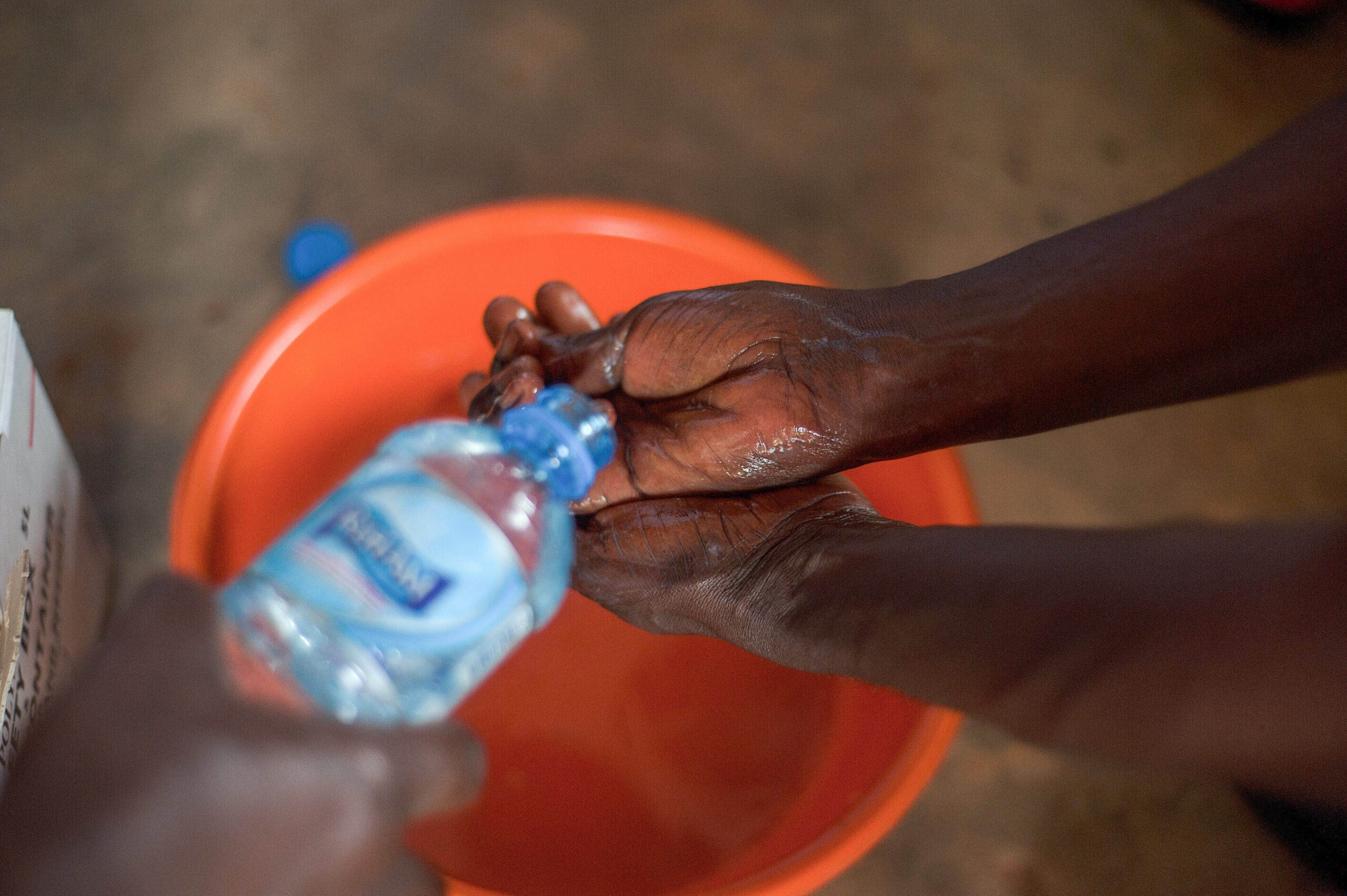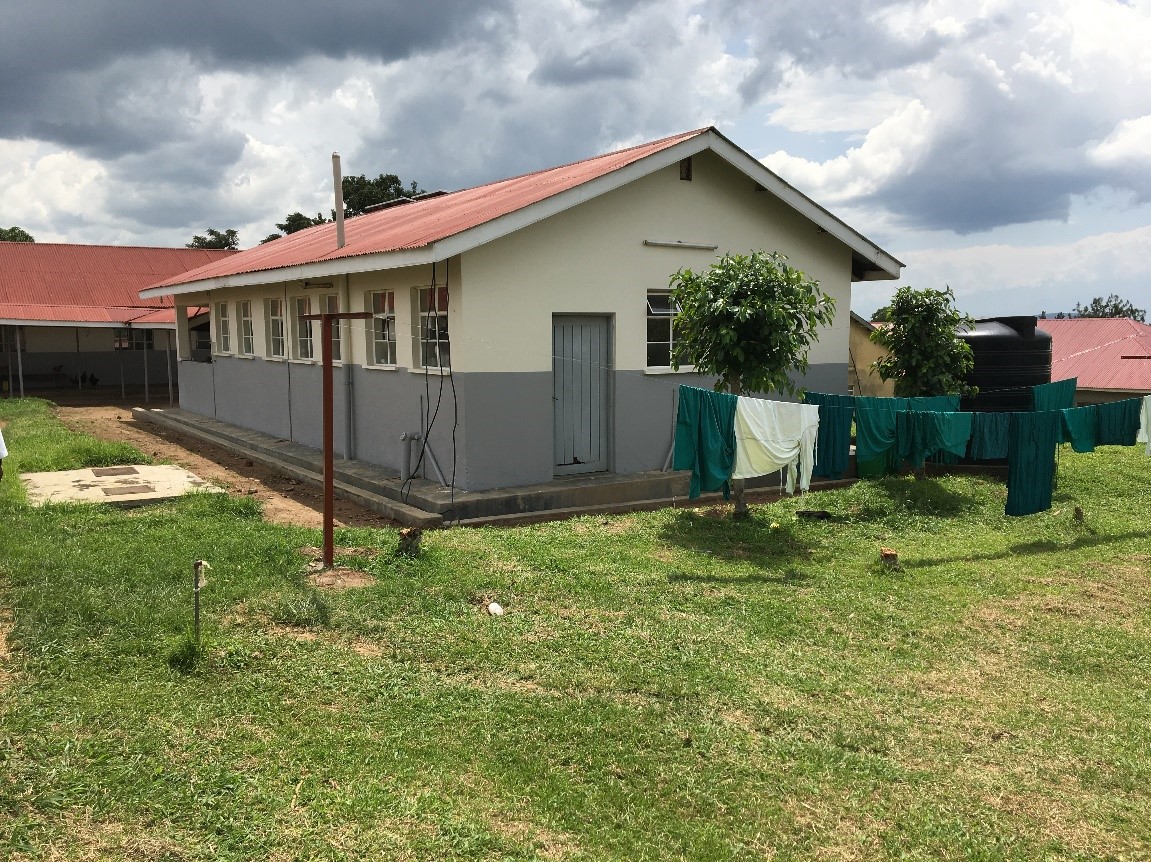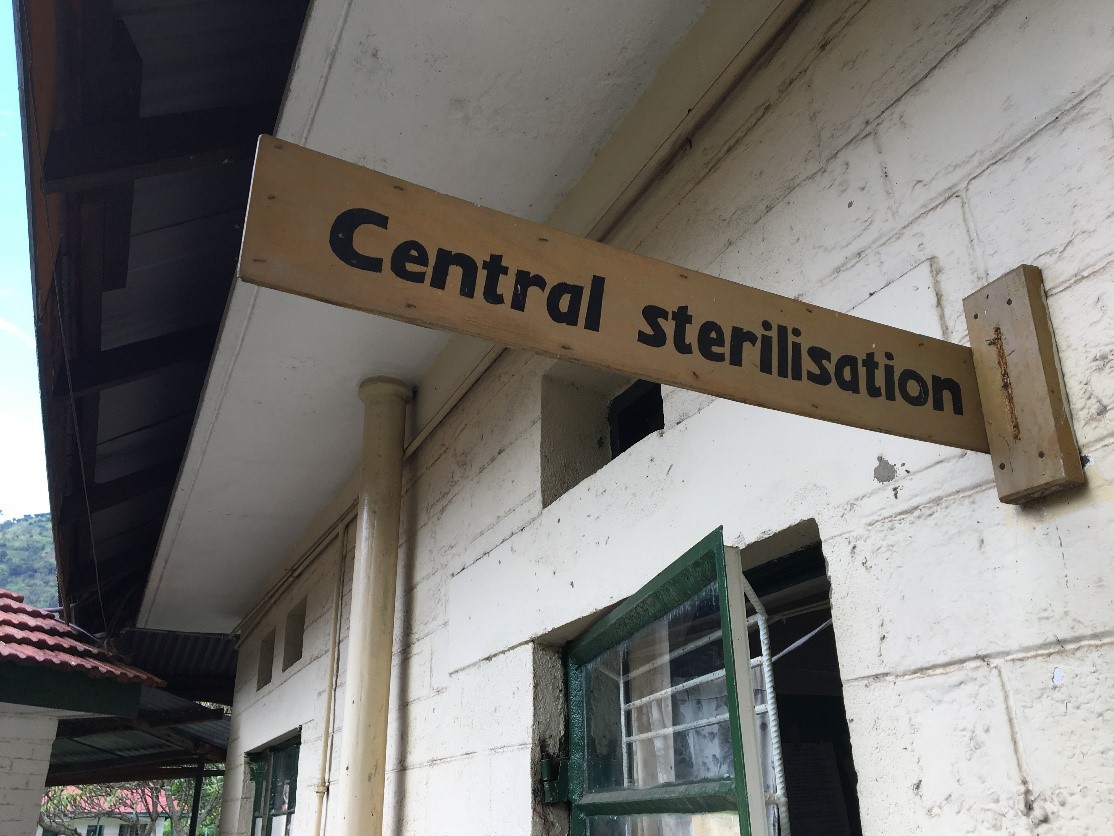
Supporting WASH in health care facilities

Walking up to the front gates of Kilembe Mines Hospital in Western Uganda, one of the first things that catches your attention are the lush, mountainous terrain surrounding the health facility. Patients and family members line the airy, shaded corridors of the outdoor covered walkways and wait in noisy, crowded ward waiting areas filled with the crackle of TV news anchors and the infrequent baby’s cry. Patients are either waiting to be seen or waiting for someone they know to be seen. Doctors, nurses, and health assistants dressed in neatly pressed, starch white uniforms pass by with a determined purpose and hint of urgency. Their faces are warm and yet heavy with the burden of caring for such a large patient load with limited resources.
What may not be as obvious is the presence (or lack thereof) of water, sanitation, and hygiene (WASH) infrastructure and services within the health care facility.
 Like many health care facilities around the world, Kilembe Mines Hospital in Western Uganda struggles to maintain adequate WASH.While the number of sinks with soap, or latrines, or bottles of chlorine may not seem critical to patient care, consider these global data recently published by the World Health Organization (WHO) and UNICEF:
Like many health care facilities around the world, Kilembe Mines Hospital in Western Uganda struggles to maintain adequate WASH.While the number of sinks with soap, or latrines, or bottles of chlorine may not seem critical to patient care, consider these global data recently published by the World Health Organization (WHO) and UNICEF:
- 1 in 4 health care facilities worldwide lack basic water services.
- 1 in 5 health care facilities worldwide lack any sanitation services.
- 1 in 6 health care facilities do not have soap and water for handwashing.
WASH services are critical to providing quality health care services and considered a core component to infection prevention and control (IPC) practices. These sentiments were shared in a statement by Secretary-General Antonio Gutiérrez, in which he called for “…global call to action for water, sanitation and hygiene—or WASH—in all health care facilities.” Similarly, the need for action has been recognized by several WHO member states who put forth a resolution at the 72nd World Health Assembly on water, sanitation, and hygiene in health care facilities.
 Sterilization of health care facilities is key to preventing infection and the spread of drug resistance.As a global health organization, PATH is committed to supporting the WASH sector and is contributing to improving WASH in health care facilities in a multitude of ways. PATH is working with partners to advance onsite chlorine generation technologies—the MSR SafiStationTM Chlorine Generator, for example—for IPC and drinking water treatment in health care facilities. In Tanzania, PATH is conducting assessments of WASH services in health care facilities. As part of the US Centers for Disease Control and Prevention (CDC) efforts to support global health security efforts in Tanzania, PATH also supported work to implement the government’s guidelines for health care facilities with regard to local handwashing stations and clean water. With global support and guidance from the new WASH in health care facilities resolution at the World Health Assembly, more countries will hopefully follow Tanzania’s lead.
Sterilization of health care facilities is key to preventing infection and the spread of drug resistance.As a global health organization, PATH is committed to supporting the WASH sector and is contributing to improving WASH in health care facilities in a multitude of ways. PATH is working with partners to advance onsite chlorine generation technologies—the MSR SafiStationTM Chlorine Generator, for example—for IPC and drinking water treatment in health care facilities. In Tanzania, PATH is conducting assessments of WASH services in health care facilities. As part of the US Centers for Disease Control and Prevention (CDC) efforts to support global health security efforts in Tanzania, PATH also supported work to implement the government’s guidelines for health care facilities with regard to local handwashing stations and clean water. With global support and guidance from the new WASH in health care facilities resolution at the World Health Assembly, more countries will hopefully follow Tanzania’s lead.
Ultimately, the goal is to reduce the exposure and risk of patients to harmful bacteria that lead to hospital-acquired infections and to strengthen disease surveillance systems to better address infectious disease outbreaks. Without safe and adequate WASH in all health care facilities, we cannot achieve health for all.


